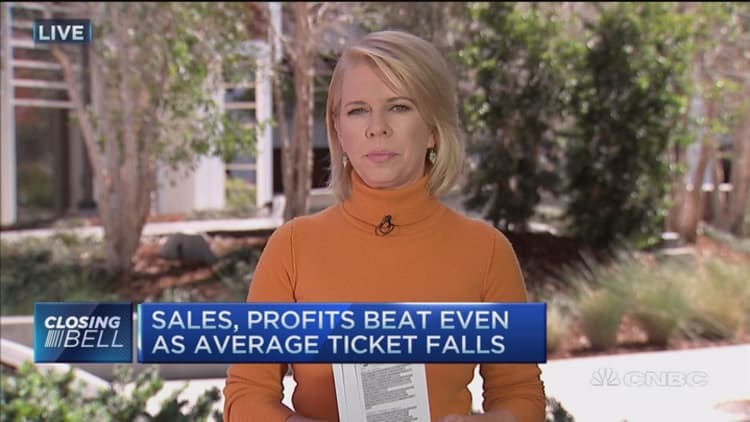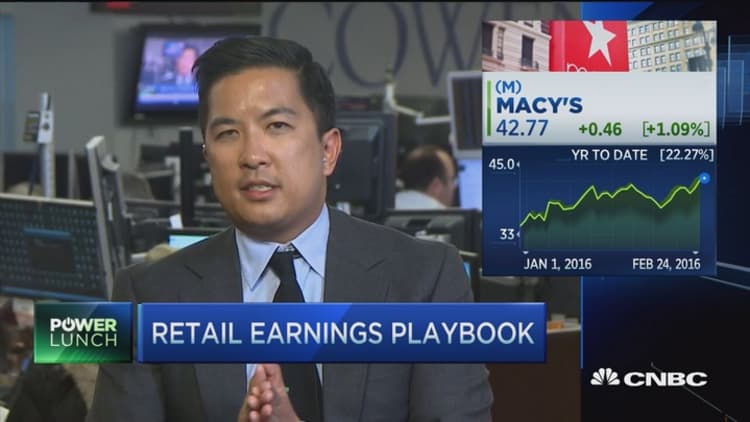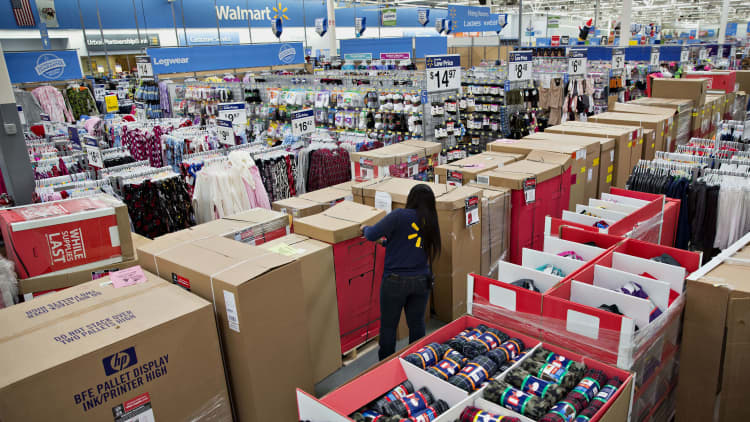


People must really like free shipping.
Though Target's revenue and earnings results on Wednesday fell short of analysts' expectations, the company outperformed in one area.
After seeing its online sales growth decelerate during the third quarter, the bull's-eye retailer's digital sales shot up a robust 34 percent during the holiday period. Those results not only reversed the company's trend of slowing online sales; they also easily outpaced that at big-box competitor Wal-Mart, whose online revenue rose just 8 percent during the quarter.
Target's digital growth also outperformed the roughly 15 percent gain posted by online retailers as a whole, and the 15 percent gain from Amazon. Analysts said Target's decision to offer free shipping with no minimum purchase period was key to its outperformance during the quarter. Wal-Mart, on the other hand, maintained its minimum $50 threshold to receive free home delivery.
"Online is highly promotional and whoever has the most attractive promotions typically wins," Forrester Research analyst Sucharita Mulpuru said. "Free shipping is a huge lever to drive sales."
During the fourth quarter, Target's digital sales increased 14 percentage points over the prior three months, to 34 percent. That performance reversed two quarters of slowing online sales growth, after the retailer's 38 percent gain in the first quarter.
On a conference call with investors, the company's management attributed the uptick to several factors — namely, broad and easy-to-understand promotions; the ability to choose whether to pick up orders in store or have them delivered; and a 20 percent improvement in its in-stock position.
But Slice Intelligence principal analyst Ken Cassar said his "gut" feeling behind Target's outperformance was its free shipping offer. Along with this promotion, his firm's data, which are collected by scanning online receipts, showed that the retailer benefited from compelling Apple promotions, including a store-branded gift card that came with certain Apple purchases. Target also logged a higher percentage of digital comparable sales from "Star Wars" toys, he said.
Importantly, Cassar noted that despite Target's blanket free shipping offer, the retailer was not dinged by consumers placing a high number of orders with just one or two cheap items in their basket. Instead, Slice data found that Target's average order size online was $79, compared with Wal-Mart's $76.
"Wal-Mart still has a bit of an edge over Target in terms of [online] volume, but Target is catching up," he said. "We may have an interesting horse race between these two guys over the course of the year."
Still, Target's margins did take a hit during the holiday period. The discounter reported a gross margin rate of 27.9 percent during the fourth quarter, versus 28.5 percent the prior year — a decline it attributed to "investments in promotions." Meanwhile, Wal-Mart's margin during the quarter ticked slightly higher.
"This seems like Target made the decision to invest gross profit dollars in free shipping to drive e-commerce re-acceleration," Stifel Nicolaus David Schick told investors. "[That's] not a bad decision, but it underscores the secular pressures under which Target operates."

Despite Target's gains, analysts noted that its overall share of online sales "is way below where it could and should be." According to eMarketer, online sales at Target accounted for roughly 3.4 percent of overall revenue last year; at Wal-Mart it was slightly less at 2.8 percent of revenue. And while Target's full-year digital sales jumped 31 percent, that fell short of its goal for 40 percent.
What's more, Mulpuru was skeptical that Target's holiday promotion would be enough to convert digital shoppers into loyalists.
"You're getting a lot of fair-weather shoppers who will shop with you when the discount is what it is," she said. "They switch their loyalties to whoever offers them the best deal."
Like Target, Wal-Mart has been subject to criticism that it isn't growing digital sales quickly enough, given its $900 million investment into the channel last year. Spokesman Ravi Jariwala said these investments went toward consumer-facing initiatives, such as simplifying the checkout process, as well as back-end improvements to streamline fulfillment. In December, the retailer also launched Walmart Pay, its own mobile payment solution.
The world's largest retailer will invest another $1.1 billion into digital this year. Though Jariwala said he could not provide much detail on its future initiatives, he said they would once again be a balance between consumer-facing and back-end technologies. One area in which the company plans to invest is its online grocery business, which is currently in 22 markets, Jariwala said.
Analysts have pointed to the fact that more than half of Wal-Mart's sales come from grocery, which puts it at a strategic disadvantage in terms of digital sales. That's because this category's online penetration falls well short of overall trends.
Whereas the Census Bureau said digital sales accounted for roughly 14 percent of total retail sales last year, food and beverage only does about 2 percent of its sales online, Mulpuru said. She added that even though digital remains a small fraction of Wal-Mart's overall sales, that still represents tens of billions of dollars.
"It's really hard to move the needle when you're that large," Mulpuru said.
Overall, both Wal-Mart and Target posted mixed results for the holiday period. Whereas Wal-Mart posted a 1.4 percent revenue decline and slower U.S. comparable sales, the retailer also logged its fifth-straight quarter of higher traffic and a sixth-consecutive quarter of same-store sales gains.
Meanwhile, though Target fell short of Wall Street's earnings and revenue forecasts, its comparable sales rose 1.9 percent. Its adjusted earnings per share of $1.52 represented a 2.1 percent boost from the prior-year period.
CORRECTION: Wal-Mart rolled out a new shopping homepage in 2014. The date was misstated in an earlier version of this article.





